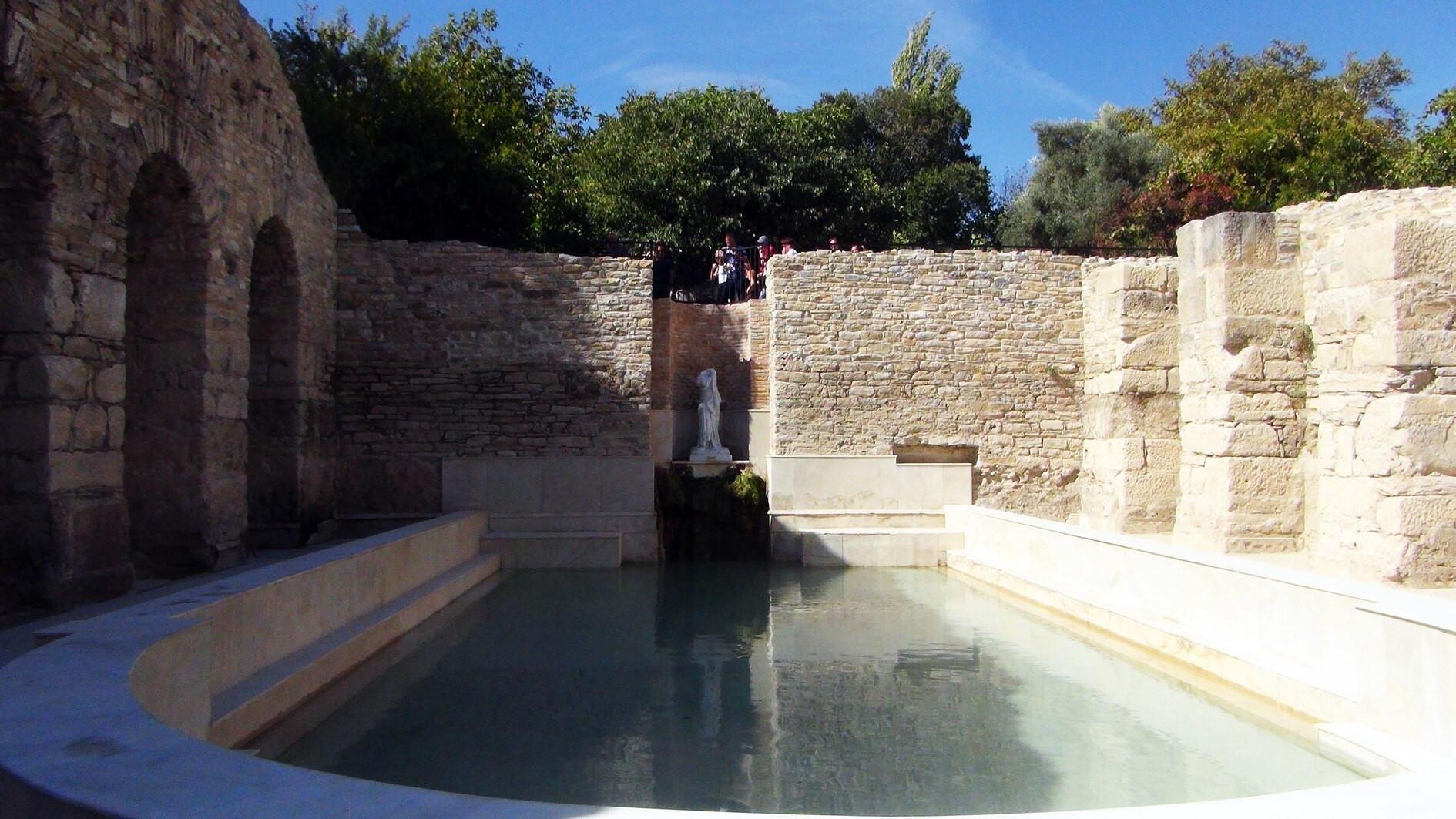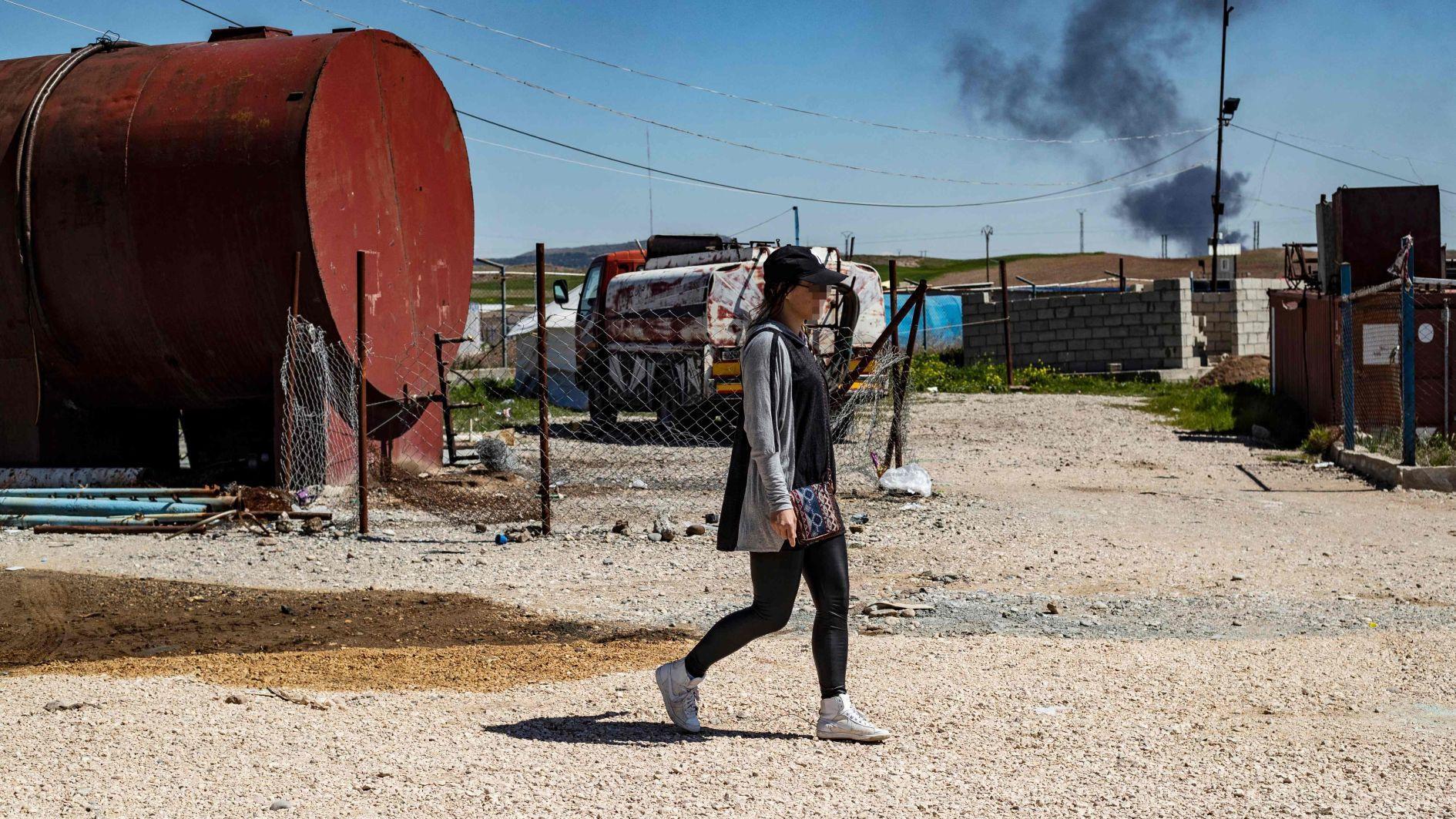Visitors flock to Roman Bath in Stratonikeia
MUĞLA

The Roman Bath in the ancient city of Stratonikeia — known as one of the world’s largest marble cities founded in the third century B.C. in the southwestern province of Muğla's Yatağan district — has been fully excavated, unveiling a stunning testament to its historical grandeur.
While 95 percent of the materials used in its construction date back to ancient times, the Roman Bath, where excavation and restoration work have been completed, has become the most visited part of the site, drawing intense interest from both local and foreign tourists.
In addition to being one of the world’s largest marble cities, Stratonikeia is also known as the city of love and gladiators. Archaeologists believe that the ancient city contained at least three baths, one of which may have been reserved for women. The Roman Bath, located at the entrance of Western Street, was restored to its original form after excavations. The structure has become the highlight of the ancient city, attracting many visitors.
Professor Bilal Söğüt, head of the Stratonikeia and Lagina excavations, said the restoration of the Roman Bath was completed as part of the “Heritage for the Future” project.
“We carry out archaeological excavations and restoration work in both the ancient city of Stratonikeia and the sacred area of Lagina. The bath here is one of the important structures of Stratonikeia, built during the Roman period. We completed the excavation and restoration as part of the Heritage for the Future project this year,” he said.
“We excavated the palestra, or courtyard of the bath, as well as the main entrance and administrative sections, and carried out conservation work. Ninety-five percent of the materials used here are original. Only in very small areas, where it was absolutely necessary, did we use new materials. Sometimes people think parts are new, but almost everything they see is ancient — only minimal modern elements were added,” he said.
Söğüt noted that the columns in the palestra were re-erected to show how they would have appeared in ancient times. “We also restored the cold-water pool, where we placed a replica of the 'Dancing Muse' statue we had discovered here. This type of statue was famous in the ancient world, and copies were made in Anatolia and the Aegean Islands starting about 2,200 years ago. Just like in ancient times, we placed a replica of the statue in its niche in 2025 so that visitors can visualize what it would have looked like nearly 1,800 years ago,” he explained.
He said that the bath’s architectural phases date from the first to the fifth centuries A.D., and later layers show traces of the Menteşe Beylik and Ottoman periods. “We documented all these layers one by one, like the pages of a book,” he said. “In this way, we completed the historical process within Stratonikeia from antiquity to the present day, creating a site that both preserves our cultural heritage and offers a valuable experience for visitors.”
Söğüt said public interest has been remarkable. “Some people come just to watch the reflection of the water in the pool, while others sit for hours quietly facing the statue. This shows that people love and embrace this heritage,” he added.















